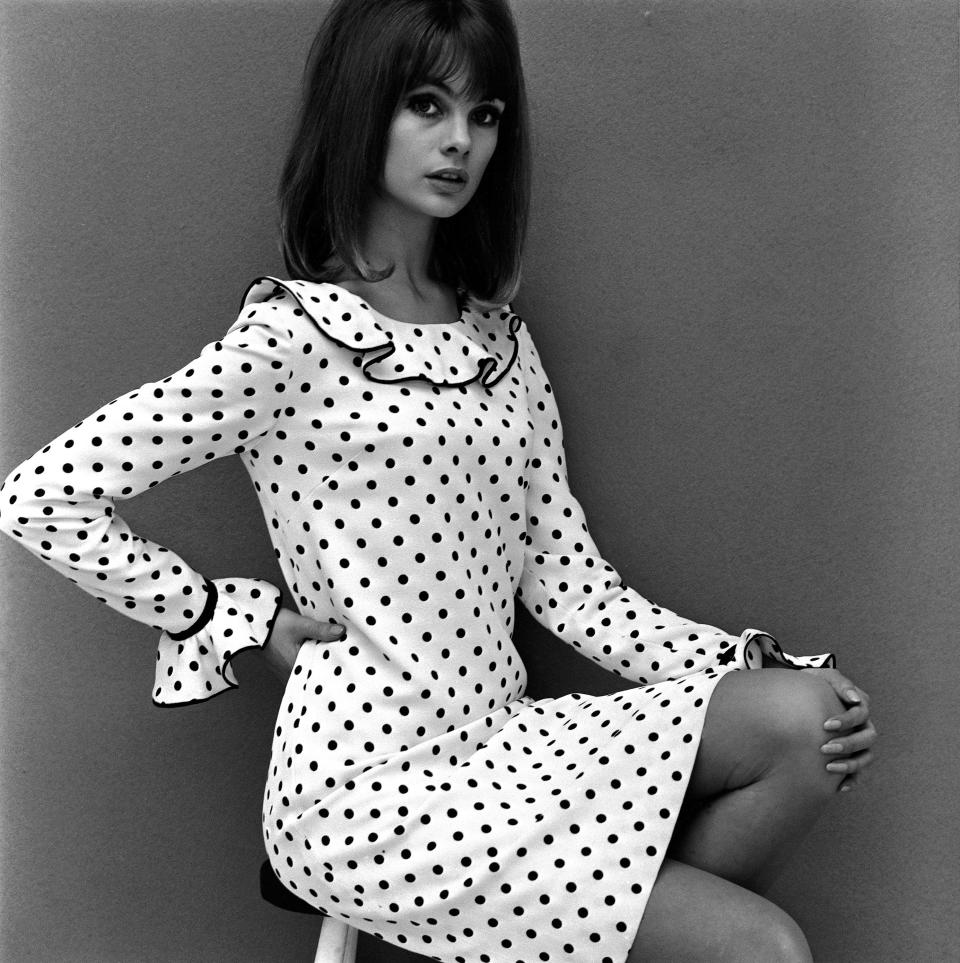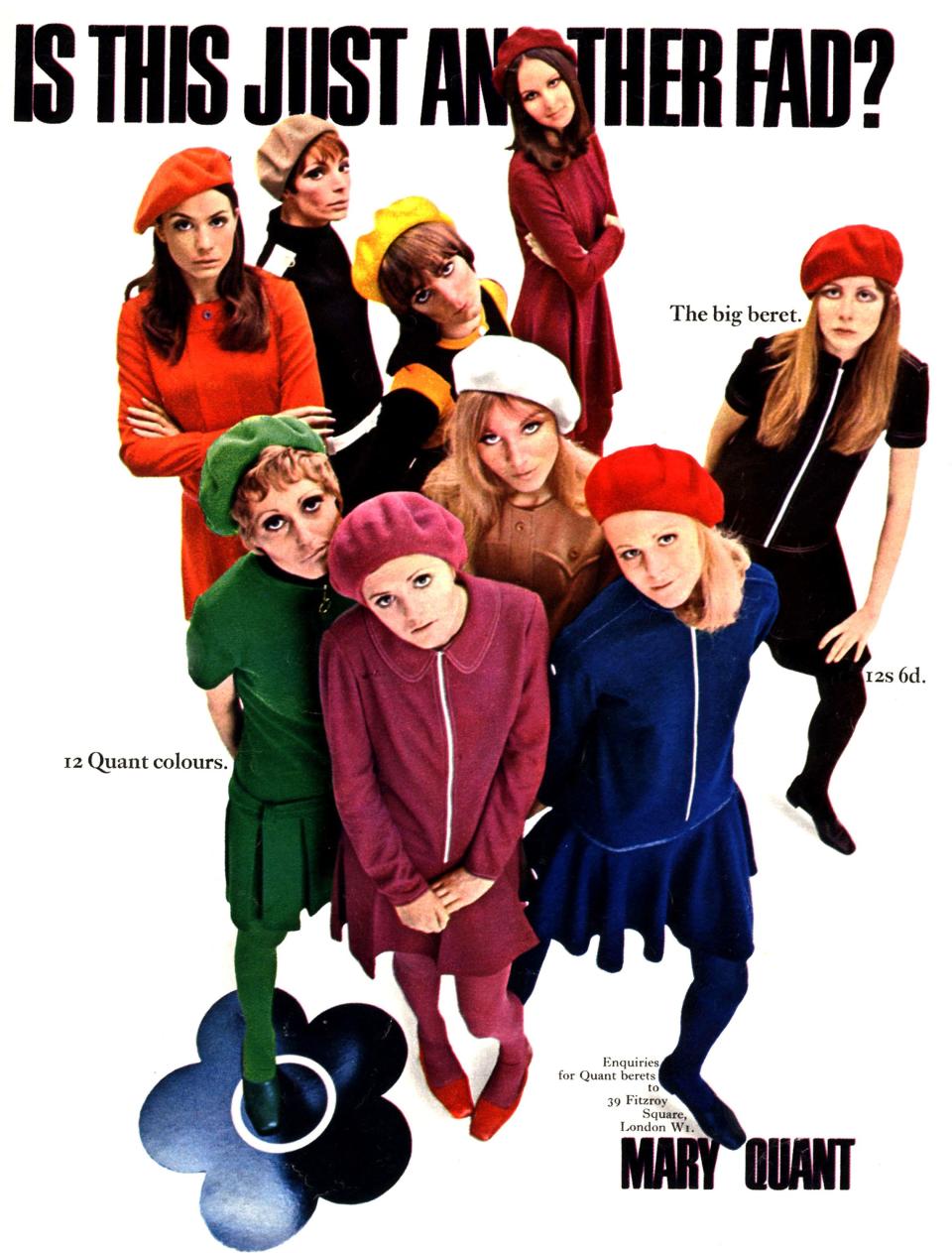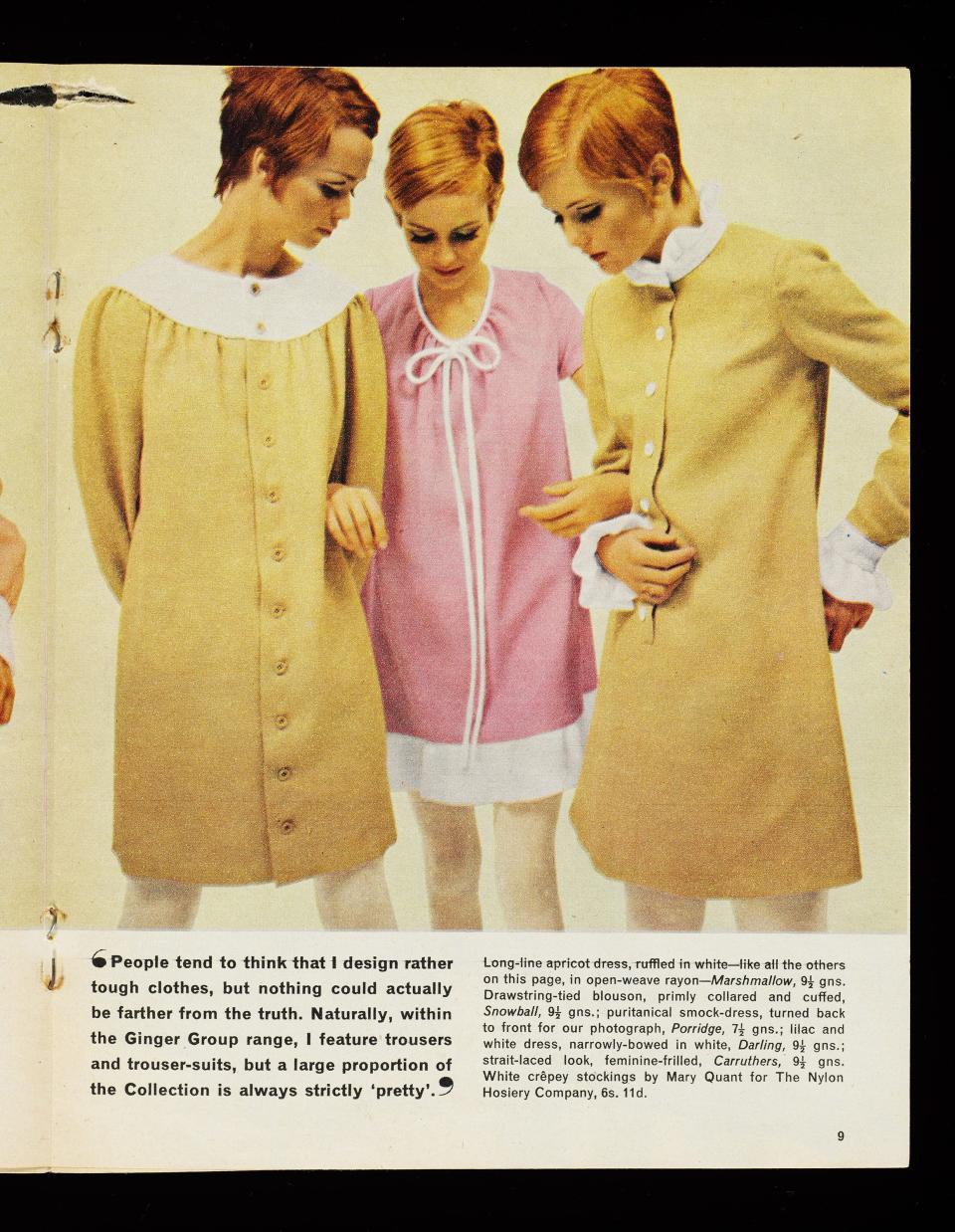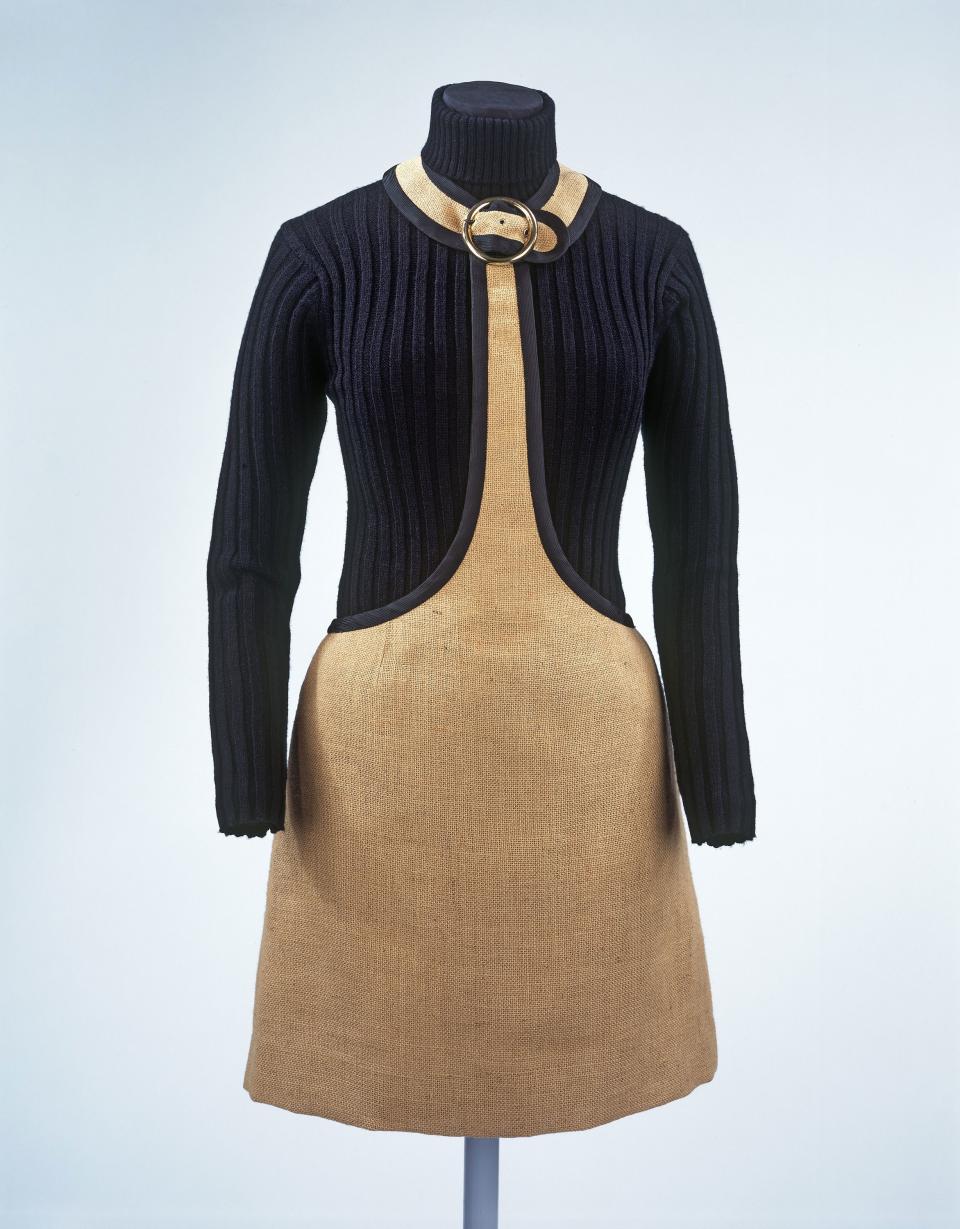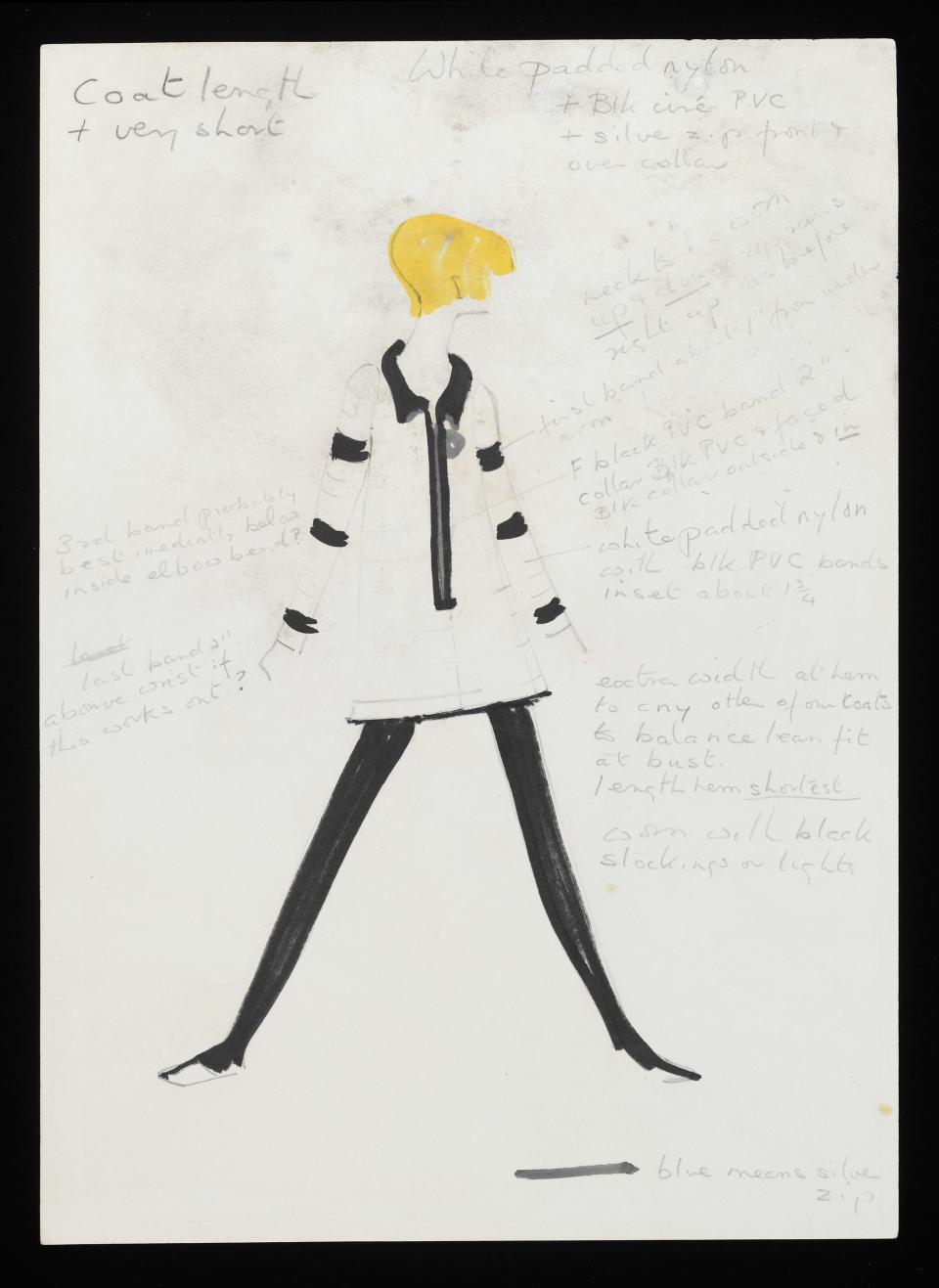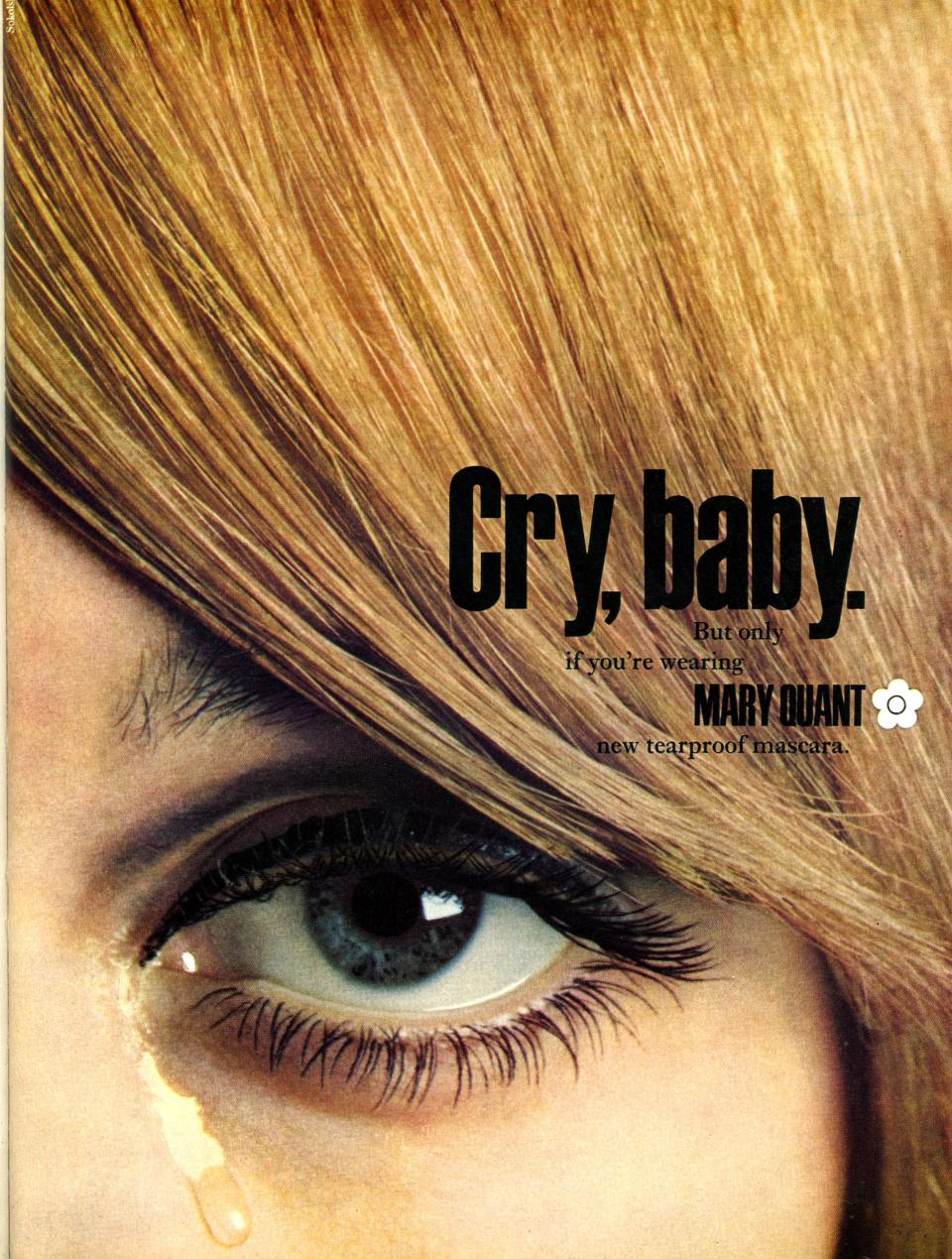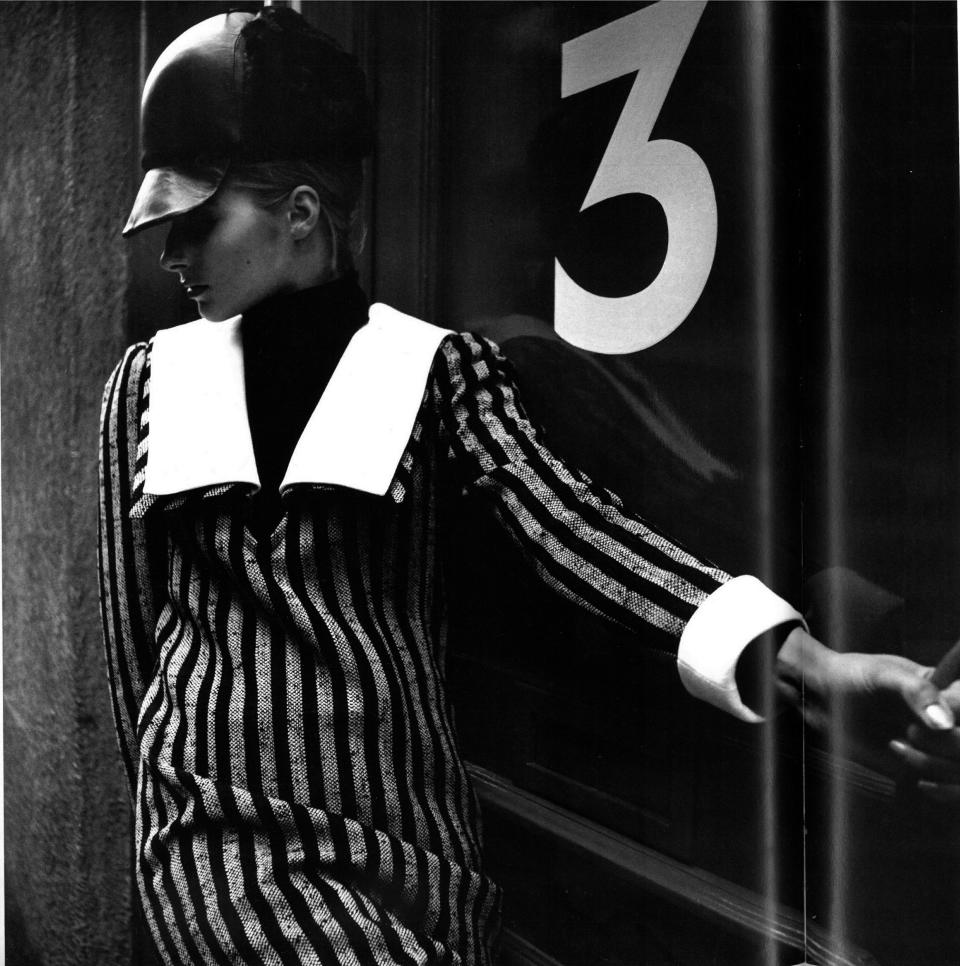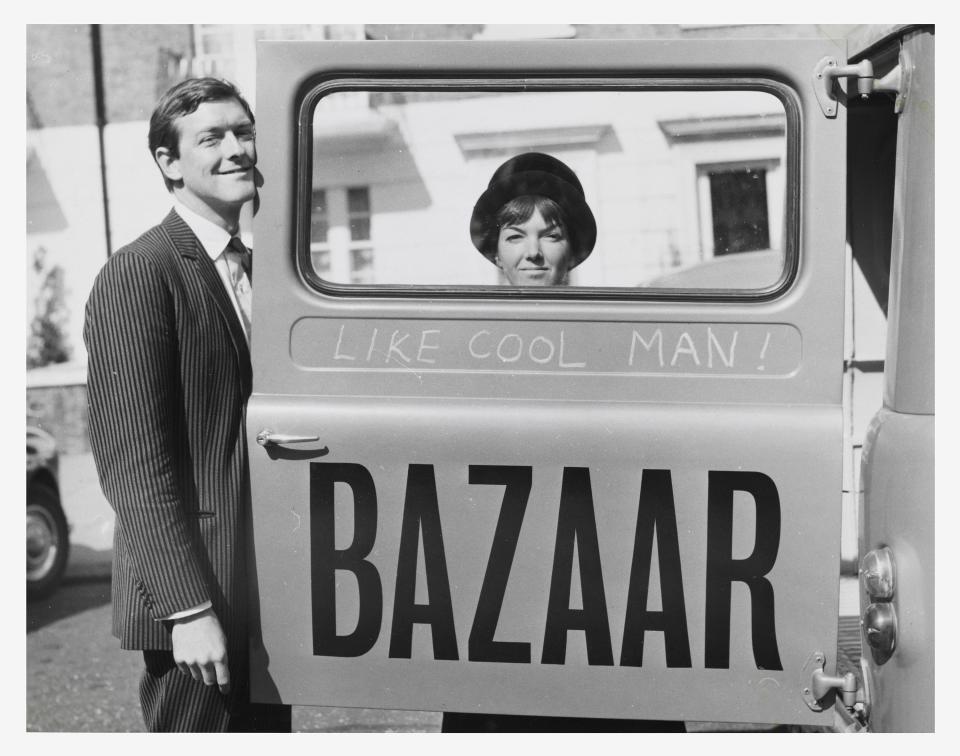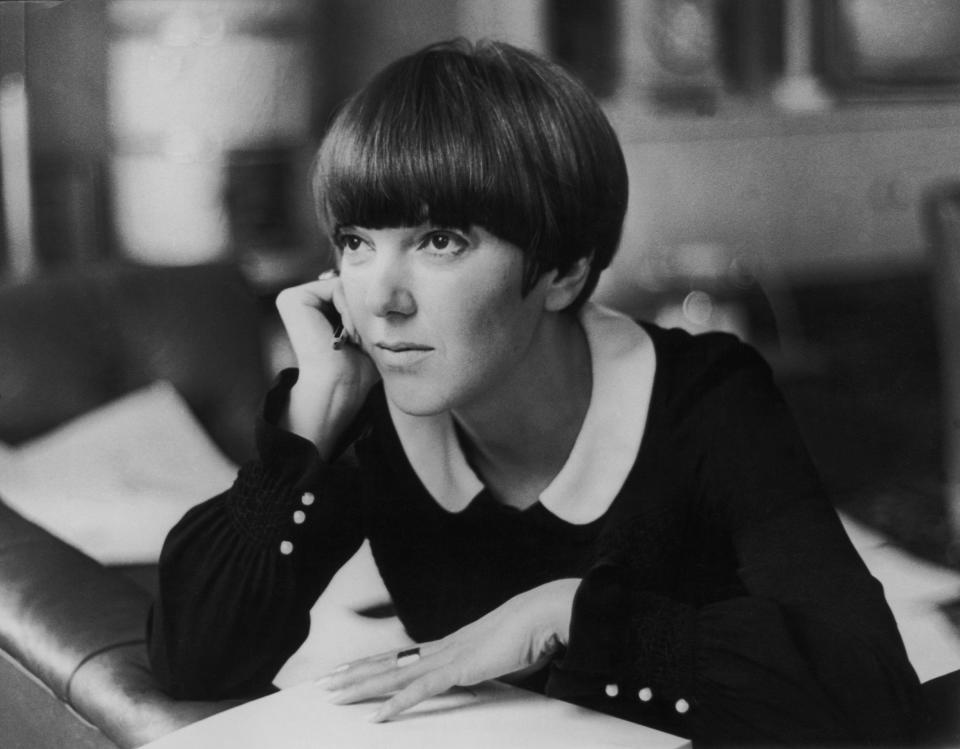Mary Quant and Her Chelsea Girls Swing Into London’s V&A Museum
As the Mary Quant exhibition opens tomorrow at the V&A it’s pretty much as if the cause-and-effect of a London youth revolt is being re-enacted under one roof. On one side, there’s the Christian Dior extravaganza—the smash-hit showcasing of the dreamy, romantic, corseted haute couture of the ’50s—and on the other, now comes the complete generational rejection of it which Mary Quant led in the ’60s.
Quant might go down in history as the girl who “invented” the miniskirt, but she, for one, resisted that tag from as far back as 1965. She saw the creative backlash against bouffants, waspies, and mother-knows-best as actioned by the girls around her, as she insisted in her book Quant by Quant, written even as the runaway success of her tiny Bazaar store had bloomed into an empire with 150 stockists and her massive fame had been amplified across America. “Over and again I was told I was responsible for the offbeat clothes that became known as the Chelsea Look… people either loved them or hated them. But, in fact, no one designer is ever responsible for such a revolution. All a designer can do is to anticipate a mood before people realize they’re bored with what they’ve already got.”
For the first time, Quant captured a feeling that bubbled up from the street. She was at the forefront of a movement which revolted against the system of fashion being superciliously dictated from Parisian salons on high. “Never before have the young set the pace as they do now. Never before have so many of the leaders, the trend-setters in all fields of design, been so young,” she wrote. “And dress design is not only the most significant and speediest of the decorative arts, but it’s also the most important, because it is so personal.” (Rarely has such an honest and long-standingly accurate observation been made by a designer.)
It’s fitting, then, that this exhibition should cut Quant’s heritage with the energy of her connection to the girls who craved her clothes, and inspired them. The show is partly compiled from the Quant archive and the V&A’s collection, but the rest has been gathered through an open call to wearers sent out by the museum under the hashtag #wewantquant. It means that the sweep of her career making groovy A-line dresses, schoolgirlish pinafores, Wet Look PVC macs, bright jersey shifts, and matching knickers—and all the daisy-logo’d makeup which followed—is captioned by the memories of the teenagers and young women who bought and loved it with such a passion that they’ve held onto it all their lives.
There’s the 1960 Alexander Stripe dress owned by Carola Zogolovich, who remembers Quant’s Bazaar boutique in Kings Road as “by far the most stylish shop in London… the Road was a hangout for a rather louche circle of late teens and early 20s people, inventing themselves.” Nicky Hesseburg’s drop-waisted bubble-skirted cocktail dress “was bought ‘as a kind of bribe’ by my mother to induce me to go to deb parties.” (Girls couldn’t stand the stuffy formality of their mother’s old social standards.) Pauline O’Shea bought the triple-collared Columbine shift dress with her pay packet as a 21-year-old school secretary in 1964. The dress O’Shea donated stands next to a photograph of a quintessentially ’60s model wearing it— all angles, with her head turned to demonstrate her radical 5-point Vidal Sassoon cut in profile. It’s Grace Coddington, of course.
There’s a lot to be gleaned by fashion geeks in terms of the clothes—how well made they were in the early days; how Quant drew up liberating solutions like tights, matching dress and knickers sets, and stretchy underwear for fearless girls who wanted to wear sky-high hemlines. There’s little inquiry into how Quant so brilliantly came up with her daisy logo, basically writing the template for how fashion branding and marketing is done to this day. And there’s nothing to place Quant and London in the contexts of pop music, sexual politics, and public events—which is a shame, because the V&A has all that surrounding contemporary material stored away in its archives.
It’s the glimpses of fashion as it was lived that make up the best bits of this show: the donors’ testaments, as well as the projections of TV documentaries and newsreels taken of Quant at work, her revolutionary shows with girls dancing, pop groups playing, and American store buyers going crazy. Today’s young designers will find the footage of Mary at work riveting: She talks about how “terribly difficult it is to start” designing, about staying up all night when she has an idea, and about thinking hard on how to make things for “the young working girl who is setting the pace… they’re casual and terrifically sexy.”
Later, Mary is captured in her sewing room, sitting on a cutting desk with a glass of wine, checking a fitting with her husband and business partner Alexander Plunket Greene. It seems to be at the end of a very long, hard day’s night in Chelsea. That was then, but plus ça change!
In the end, it’s the reality of human experience and the delight in fashion as it’s lived that makes the difference between a show of vintage clothes on dummies, and an exhibition that will spark many smiles—not just from the women who wore Quant, or ever aspired to, but from their grandchildren, who’ll be blown away by how cool their liberated grandmas really were. And doubtless are still.
Mary Quant and Her Chelsea Girls Swing Into London’s V&A Museum

